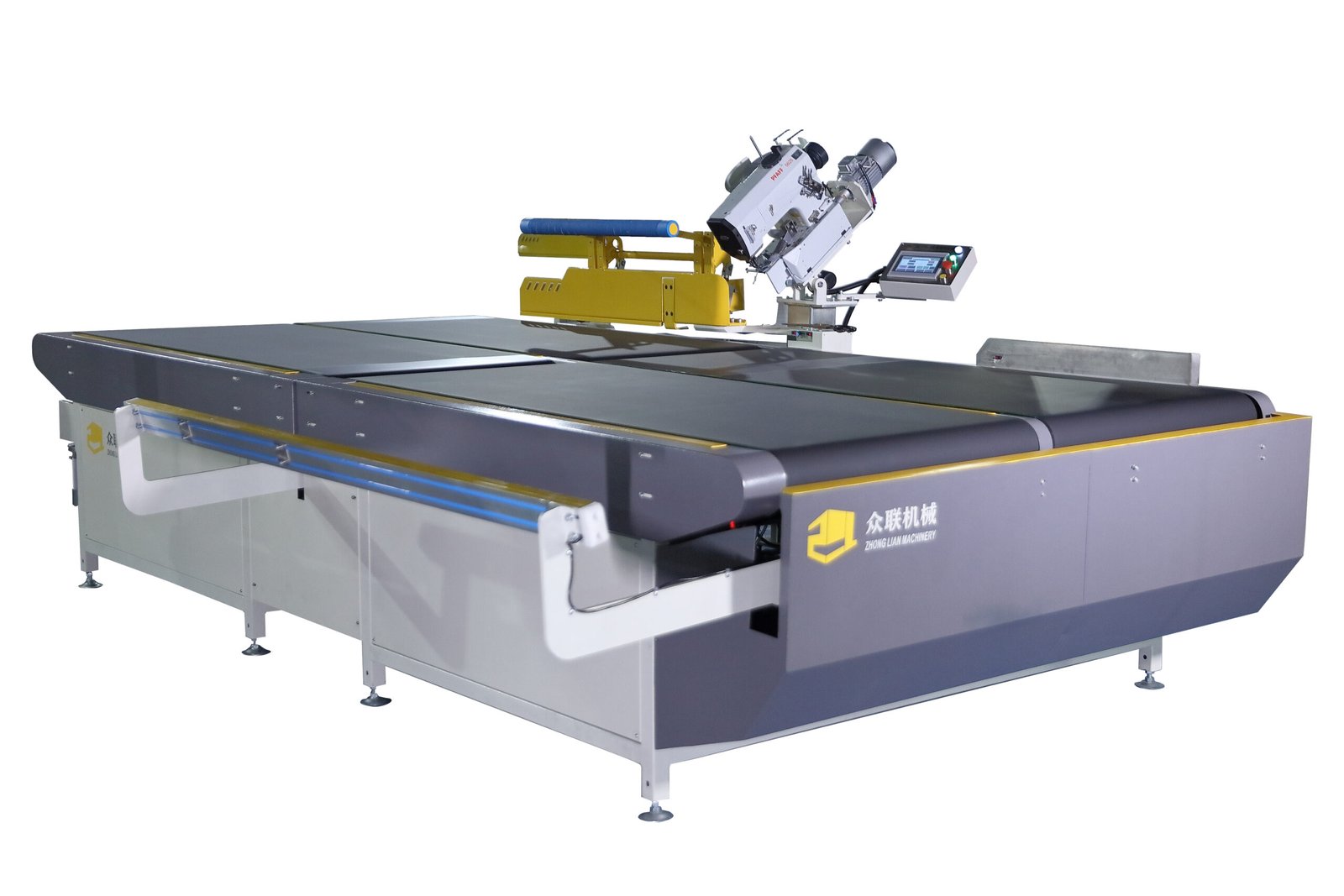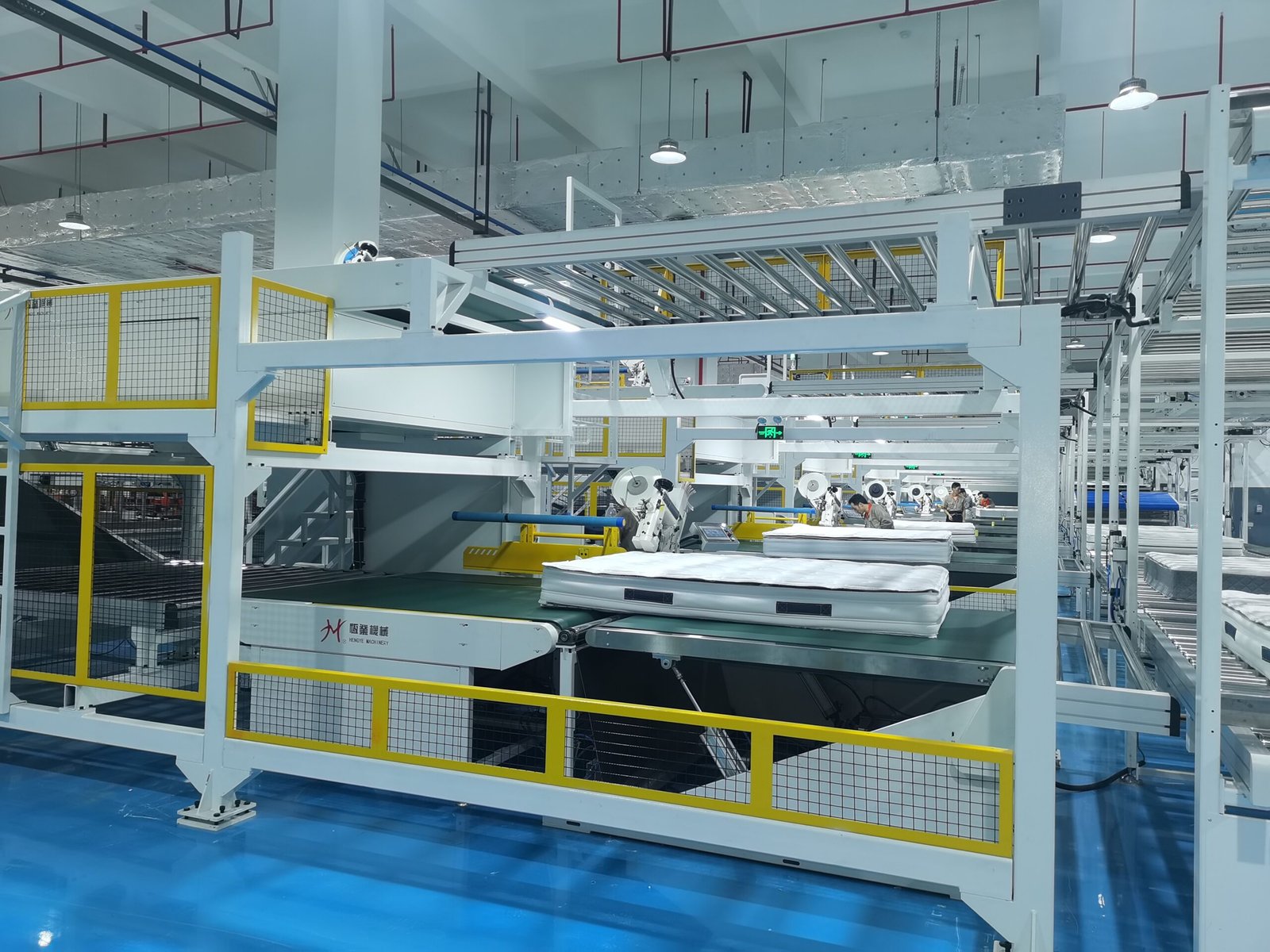Struggling to choose between manual and automatic sewing machines for your factory?
Automatic mattress sewing machines increase speed, consistency, and reduce labor—while manual machines offer better control for custom work.

Let’s break down the pros, cons, and best use cases for each type—so you make the right investment.
What are the core differences between manual and automatic machines?
Confused by the technical jargon? You’re not alone—many factory owners are unsure where to begin.
Manual machines require operator skill, while automatic machines rely on software and sensors to do the job faster and more precisely.

Dive deeper: Features that define each machine
🧵 Operation style
Manual machines rely on operator control. The worker moves the mattress edge along the stitch path. Automatic machines use conveyor belts and sensors to handle the movement and stitching.
📋 Table: Manual vs. Automatic Features
| Feature | Manual Sewing Machine | Automatic Sewing Machine |
|---|---|---|
| Operator control | Full | Minimal |
| Speed (mattress/hour) | 3–5 | 10–20 |
| Consistency of stitching | Variable | High |
| Training time | High | Low |
| Flexibility for designs | High | Medium |
| Cost | Low | High |
Manual gives you freedom and finesse. Automatic gives you repeatability and speed.
Which machine delivers better efficiency and productivity?
Slow production kills profits—especially in peak season.
Automatic machines can triple your output with less staff and fewer errors.

Dive deeper: Time and labor comparisons
Automatic machines reduce operator fatigue. They maintain a stable pace all day without slowing down.
🏭 Real-world output examples
| Machine Type | Operators Needed | Mattresses per 8hr shift |
|---|---|---|
| Manual | 2 | 40–50 |
| Automatic | 1 | 100–160 |
Less labor, more output. The numbers speak for themselves.
Which one ensures higher stitching precision?
Loose seams or skipped stitches can ruin your entire mattress batch.
Automatic machines eliminate stitch variation, tension issues, and missed spots.

Dive deeper: Why precision matters
Manual sewing depends on the operator’s mood, hand-eye coordination, and consistency. That changes hour to hour.
Automatic systems use digital feedback loops to maintain even tension and stitch length—no matter how long they run.
✂️ Stitch Accuracy Comparison
| Factor | Manual | Automatic |
|---|---|---|
| Stitch variation | Common | Rare |
| Seam strength deviation | ±10% | <2% |
| Daily consistency | Operator-based | Software-based |
If you want every product to look and feel identical, automatic wins.
Which is more cost-effective in the long run?
Manual machines seem cheaper—until you calculate labor and rework costs.
Automatic machines offer faster ROI by reducing mistakes, labor hours, and production time.
Dive deeper: Breaking down total cost of ownership
Manual machines cost less upfront but require more skilled labor and supervision. Automatic machines cost more upfront but cut costs every day they run.
💰 Financial breakdown over 3 years
| Cost Category | Manual Machine | Automatic Machine |
|---|---|---|
| Initial investment | $3,000–$6,000 | $20,000–$35,000 |
| Monthly labor cost | High (2 operators) | Low (1 operator) |
| Monthly rework | Frequent | Rare |
| ROI timeframe | 24–36 months | 12–18 months |
For large production runs, automation pays off quickly.
What about flexibility and customization?
Some clients want unusual sizes, shapes, or custom patterns.
Manual machines allow expert sewers to adapt in real time. Automatics need pre-programming and fixed patterns.
Dive deeper: When manual machines are better
Manual machines are ideal for boutique factories, R&D labs, and custom product lines. You can handle special materials, quick changes, and edge cases that automatic machines struggle with.
Automatic machines thrive in repetitive, standardized workflows—perfect for high-volume mattress production.
Which is easier to learn and operate?
Training new workers takes time, especially in high-turnover environments.
Automatic machines reduce training time by 60–80%, letting new operators become productive faster.
Dive deeper: Training and skill levels
🎓 Skills needed
| Task | Manual Machine | Automatic Machine |
|---|---|---|
| Sewing control | Yes | No |
| Stitch length adjustment | Manual knobs | Digital presets |
| Error handling | Manual | System alerts |
| Training time (avg) | 2–4 weeks | 3–5 days |
If you’re expanding your team, automatics are easier to onboard.
Conclusion
If you need speed and uniformity, go automatic. If you need flexibility and control, stick with manual. Choose based on your product line, team, and goals.
Get in touch with us for tailored solutions! We look forward to collaborating with you and shaping a brighter future together!
📞 | WhatsApp:+86 15220512074
📧E-mail:zhongliantec@gmail.com
Web | Link:mattressmachineryzl.com
